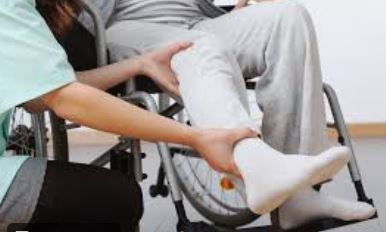Impact of Educating the patients and attendants on prevention of pressure sores in paraplegics
Abstract
Background: A pressure ulcer is localized injury to the skin and/or underlying tissue usually over a bony prominence, as a result of pressure, or pressure in combination with shear [1]. Pressure sores have been a common complication in cases of paraplegic / quadriplegic patients. The main cause is unrelieved prolonged pressure usually over bony prominences along with various intrinsic and extrinsic causes in patients with impaired sensations. Prevention of pressure sore has been the objective of educating the patient and the attendant regarding this dreaded complication. This study aims at evaluating the outcome of educating the patients and the attendees and defining their role in prevention of development of pressure sores.
Materials and methods: One hundred & fifty patients (98 males & 52 females) of traumatic and non-traumatic spinal cord injury (SCI) were enrolled from the in-patient department of Paraplegia and Rehabilitation in our institute from 2010-15. The patients were assessed for the presence of pressure ulcers and skin condition at the time of admission. The patients & their attendees, during the stay were educated for their risk of developing pressure ulcers and its prevention as per NPUAP/EPUAP (National Pressure Ulcer Advisory Panel and European Pressure Ulcer Advisory Panel) guidelines and patient teaching protocol for pressure ulcers prevention and management in a comprehendible language [2]. The patients were monitored daily and reassessed at discharge, 1, 6 and 12 months’ time.
Results: The assessment was done according to quality indicators suggested by NPUAP/EPUAP guidelines in the form of point prevalence of pressure ulcers and incidence of facility acquired rate of pressure sores in hospitalized patients. It was seen that there was a statistically significant difference in the patients of both the groups with respect to development of bed sores and their prevention. The patients and attendees with higher scores on patient teaching protocol for pressure ulcers prevention and management had significantly lower incidence of developing pressure sores in comparison to patients with lower scores.
Conclusion: The need for patient and attendant education is most important for the prevention and management of Bed sores. In a country like ours where the ratio of health care providers to the number of patients availing facilities is very high, patient and attendant education on prevention & progression of pressure sores remains the key to reducing morbidity and decreasing burden for both the patient and health care system. In coherence to the same fact, our study had shown significantly low rate of development of bed sores were seen with educated attendees who could verbally reproduce the guidelines of care and prevention.
Downloads
References
Warner D, Konnerth K. A patient teaching protocol for pressure ulcers prevention and management: Ostomy and Wound Management, 1993; 39: 35-43.
Gehin C, Brusseau E, Meffre R, Schmitt PM, Deprez JF, Dittmar A. Which techniques to improve the early detection and prevention of pressure ulcers? Conf Proc IEEE Eng Med Biol Soc. 2006;1:6057-60.
Australian Wound Management Association (AWMA). Pan Pacific Clinical Practice Guideline for the Prevention and Management of Pressure Injury. Osborne Park, WA: Cambridge Media; 2012.
European Pressure Ulcer Advisory Panel. Pressure Ulcer Treatment Guidelines. Oxford, England: EPUAP, 1998. Available from: http://www.epuap.org/gltreatment.html.
Maynard Jr FM, Bracken MB, Creasey G, Ditunno Jr JF, Donovan WH, Ducker TB et al. International Standards for Neurological and Functional Classification of Spinal Cord Injury: American Spinal Injury Association. Spinal Cord 1997; 35: 266–274

The entire contents of the Orthopaedic Journal of Madhya Pradesh Chapter are protected under Indian and International copyrights. Orthopaedic Journal of Madhya Pradesh Chapter allow authors to retain the copyrights of their papers without restrictions, Authors grant the publisher the right of exclusive publication. The Journal then grants to all users a free, irrevocable, worldwide, perpetual right of access to, and a license to copy, use, distribute, perform and display the work publicly and to make and distribute derivative works in any digital medium for any reasonable non-commercial purpose, subject to proper attribution of authorship. The journal also grants the right to make numbers of printed copies for their personal non-commercial use under Creative Commons Attribution-Non-commercial share alike 4.0 International Public License.

 OAI - Open Archives Initiative
OAI - Open Archives Initiative












